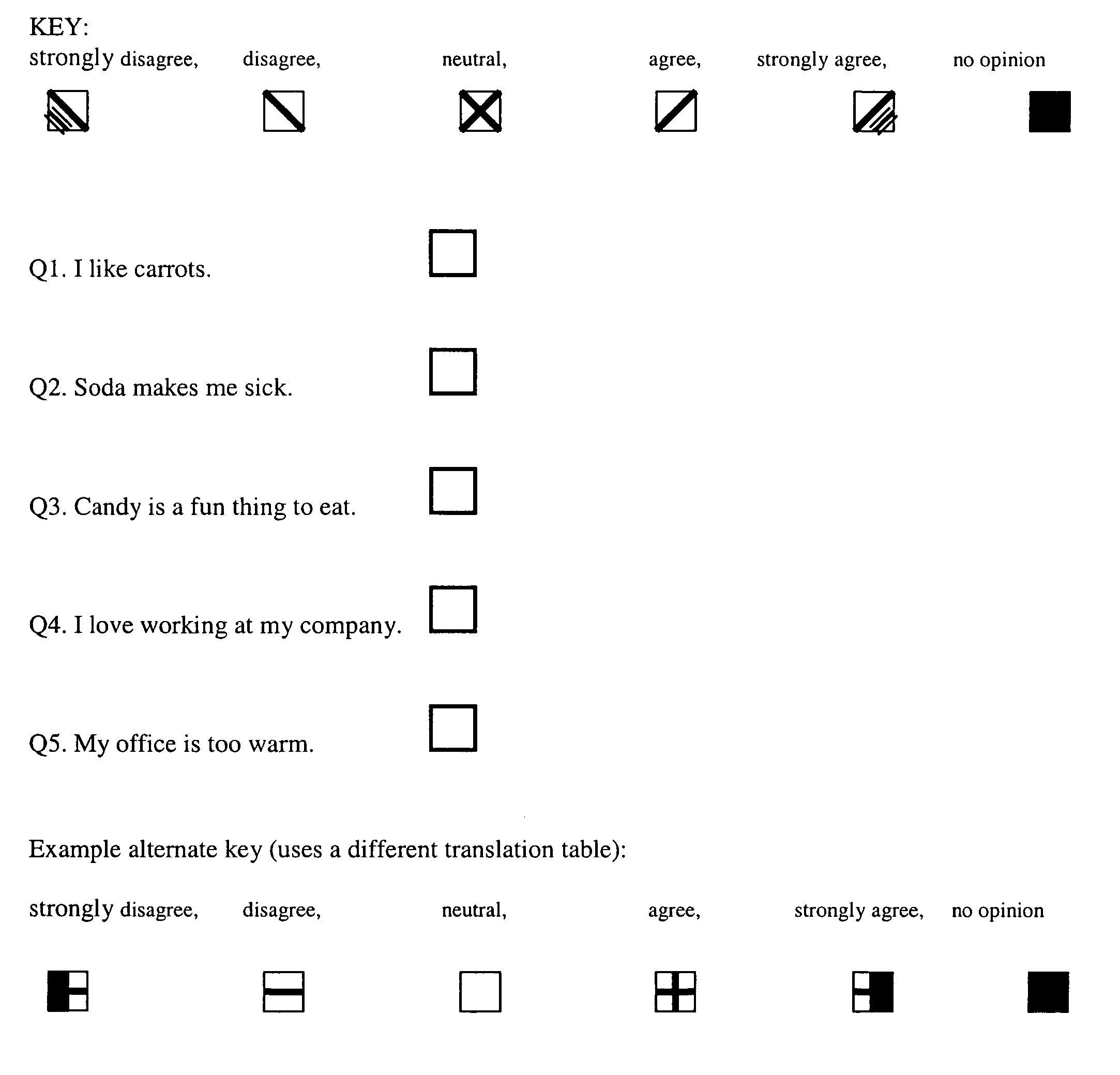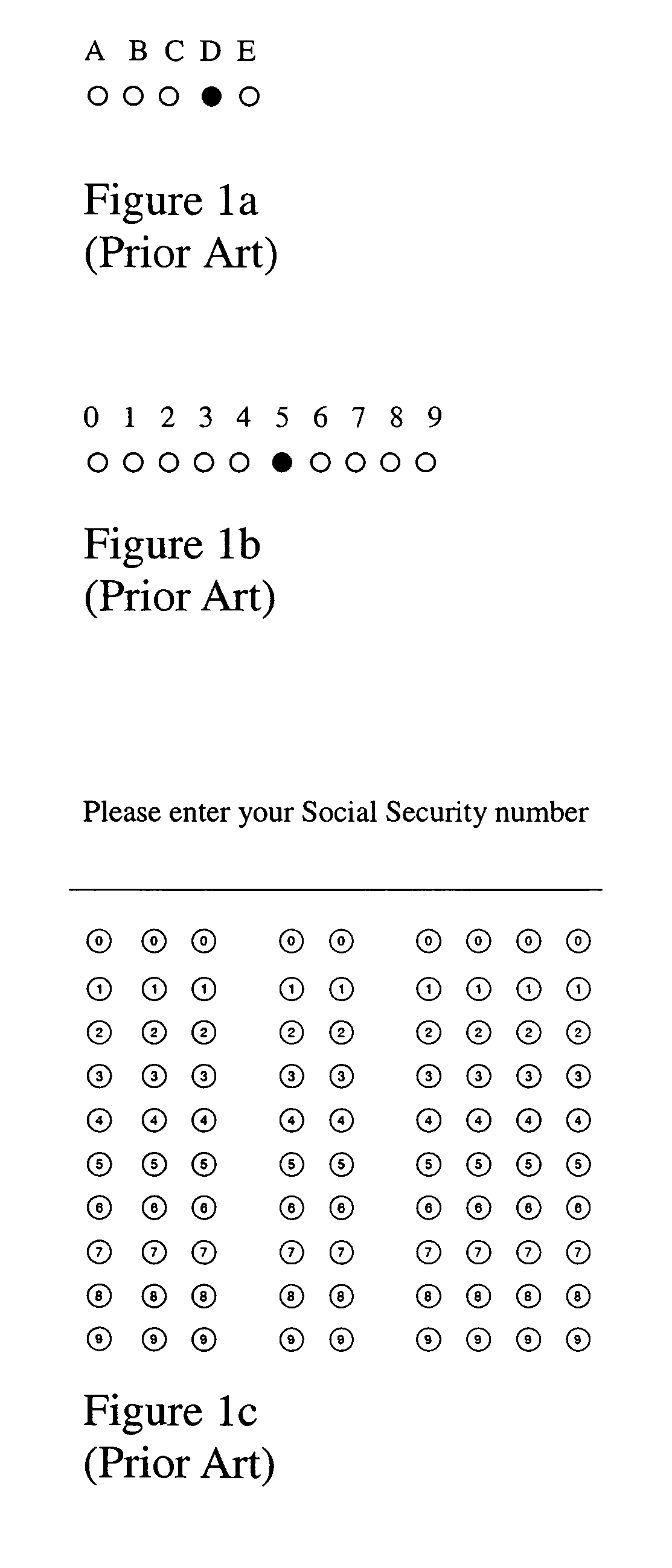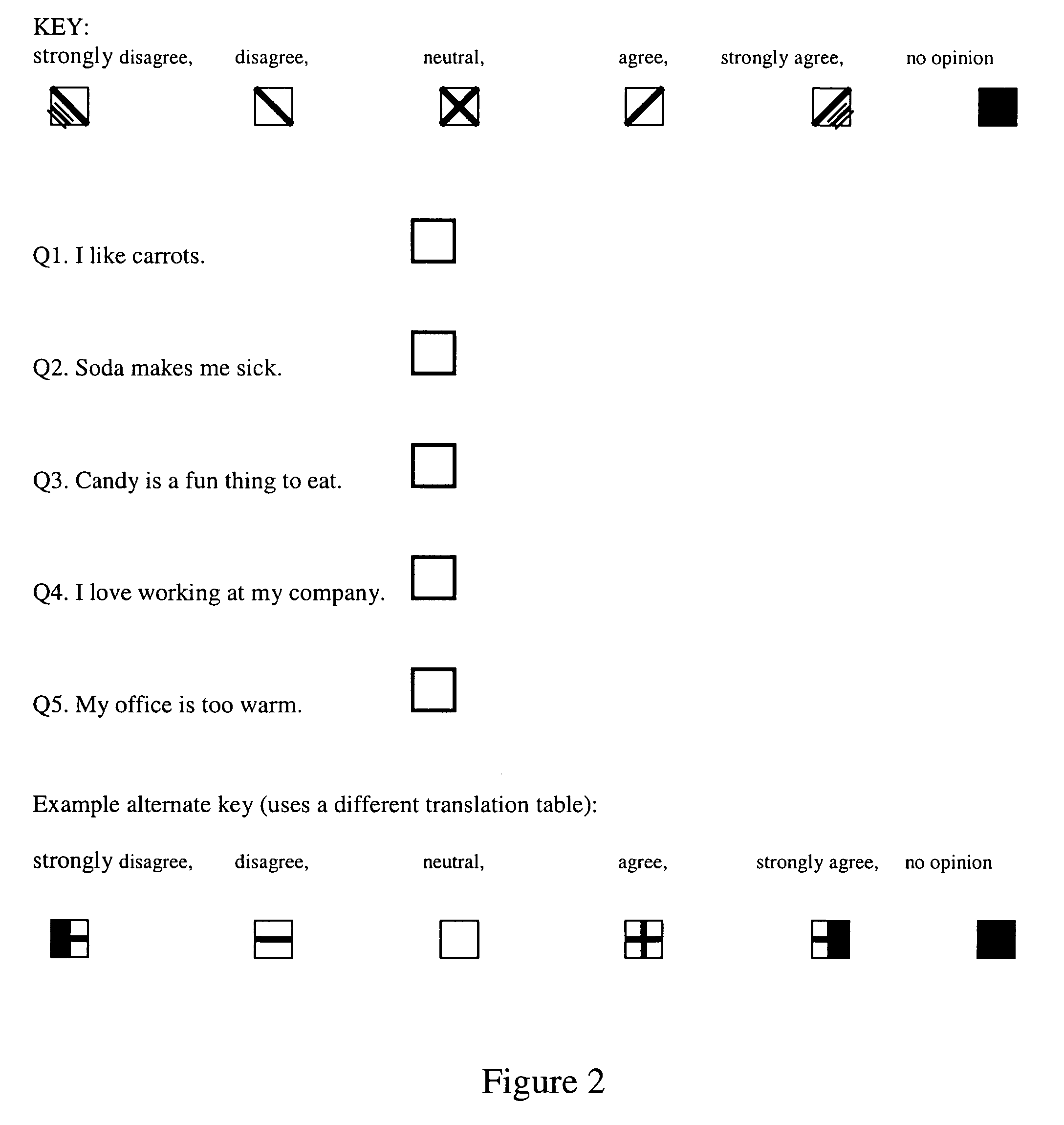Multi-level optical mark reading that uses an unambiguous symbology of marks to fill into response bubbles
a multi-level optical mark and marking technology, applied in automatic testing and analysis of marked record carriers, instruments, sensing record carriers, etc., can solve the problems of occupying precious additional space on forms, requiring expensive pre-printed forms, and requiring expensive hardware, so as to reduce the amount of form space required, reduce the amount of paper used, and reduce the cost of producing forms
- Summary
- Abstract
- Description
- Claims
- Application Information
AI Technical Summary
Benefits of technology
Problems solved by technology
Method used
Image
Examples
Embodiment Construction
[0018]Certain terminology is used herein for convenience only and is not to be taken as a limitation on the present invention. In the drawings, the same reference letters are employed for designating the same elements throughout the several figures.
[0019]All of the Multi-Level OMR embodiments described below follow the same steps:
1. Pick an unambiguous symbology of marks to fill into a bubble design.
2. Design the form using that bubble shape. Have users fill out the form.
3. Recognize the filled in forms by doing the following:
[0020]a. Search algorithms to find and isolate the bubbles on the image of the form page.
[0021]b. Interpret the pixels associated with the bubble into a raw score(s) according to the symbology used to mark the bubble. The pixels associated with the bubble may be the pixels only inside of the bubble or may also include pixels around the periphery of the bubble.
[0022]c. Translate the raw score into a limited number of possible states and output the results.
Symbol...
PUM
 Login to View More
Login to View More Abstract
Description
Claims
Application Information
 Login to View More
Login to View More - R&D
- Intellectual Property
- Life Sciences
- Materials
- Tech Scout
- Unparalleled Data Quality
- Higher Quality Content
- 60% Fewer Hallucinations
Browse by: Latest US Patents, China's latest patents, Technical Efficacy Thesaurus, Application Domain, Technology Topic, Popular Technical Reports.
© 2025 PatSnap. All rights reserved.Legal|Privacy policy|Modern Slavery Act Transparency Statement|Sitemap|About US| Contact US: help@patsnap.com



